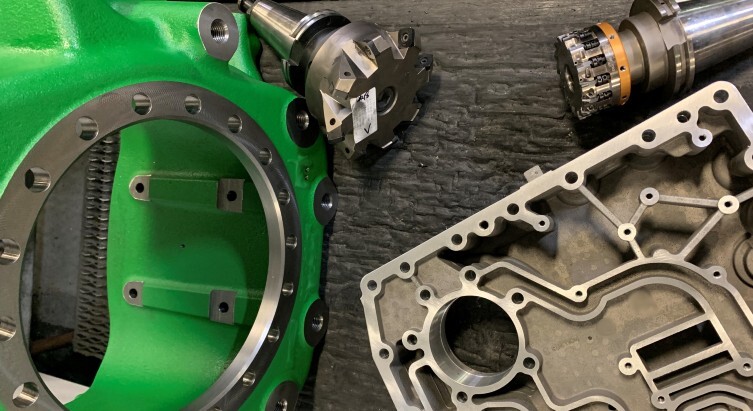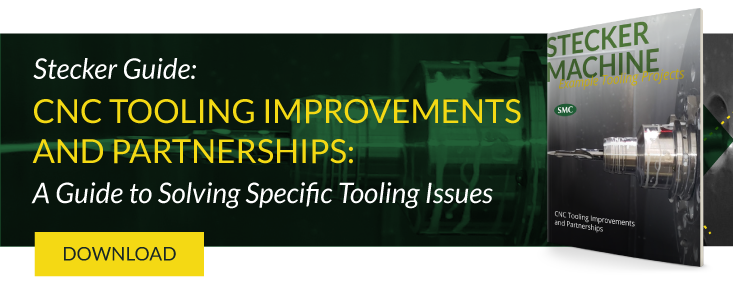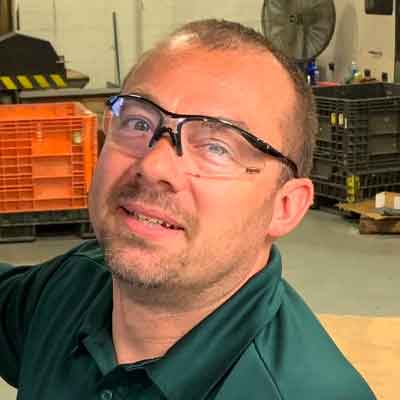What do you need from CNC tooling?
- Precision (of course) — The ultimate measuring stick of every CNC machining project, precision requires more than just the right capabilities
- Reliable rigidity — A tool must maintain its shape, remain stable, and resist flexing or vibrating during cutting operations
- Solid durability — Getting long lifetime value out of a tool is a cost-control measure that affects the bottom line, making durability an important Key Performance Indicator
- Easy installation/adjustment — Being able to easily change out and adjust tooling isn’t just efficient, it makes life better for the CNC operator
How you want a tool to perform is straightforward. What’s challenging for many CNC machine shop engineers is selecting the right tool to ensure the job gets done properly.
From the list above, performance of the tool is vital, but it’s not the only thing to consider. The experience of your CNC machine shop plays a part. And, cost is also a big factor, which we’ll address below.
When selecting CNC tooling, engineers should consider:
- Workpiece Material and Features
- Production Volume
- Combo Possibilities
- Machine Capacity
- Tool Material
- Toolmaker Selection
- Planning
- Experience of the Shop
1. Workpiece Material and Features
The material of the workpiece drives tool selection. For instance, a shop may primarily machine aluminum, ductile iron, and gray iron castings (which describes Stecker Machine), so there are likely favorite CNC machining metal cutting tools for each material. Engineers choose proven standardized tooling first, helping to reduce risk, inventory, and costs.
CNC tooling — drills, mills, taps — are required to machine different features, and there’s standard tooling for each tool type and material. Again using Stecker as an example, we have three different standard 90° square shoulder face mills, one each for machining aluminum, ductile iron, and gray iron. Of these materials, aluminum has the highest machinability, so the aluminum tooling has higher surface feet per minute (SFM) specifications, so they can run faster.
2. Production Volume
Specialty, high-end cutting tools are usually selected for high-volume projects, while low-volume jobs use more economy-level tooling. It comes down to economy of scale, with the cost of high-end, feature-specific tooling being justified by the high quantity of parts to be made by that tool.
Like much of manufacturing, CNC machining is a production-focused business, with machining centers playing a large role in a machine shop’s efficiency.
3. Combo Possibilities
Multiple-feature tools can be huge cost- and labor-savers in CNC machining. If multiple tasks — three or four or more — can be completed by one tool, it cranks up cycle time while also reducing the time needed to change out the tooling.
For instance, when designed properly, an insertable combo tool can drill and chamfer possibly three different ways, getting the job done in one pass with one tool, instead of six tools (and six passes). Yes, that custom-made, multiple-feature tool may cost upwards of $3,000, but the savings add up quickly to offset the costs, especially on a high-volume project.
4. Machine Capacity
Most CNC tooling can be used in most CNC machines. That doesn’t always mean those machines are the most efficient, however. Engineers and operators know that a greater horsepower machine — with a bigger taper — provides opportunities to use combo tools (mentioned above) that can perform many functions.
Whereas large castings require the help of hoists to move them, smaller castings don’t have that challenge. In fact, there may be opportunities for increased efficiency by designing a fixture that can run two or three small parts at the same time on a larger machine. That’s an example of when large machine = large casting doesn’t necessarily hold true.
Finding the best efficiency is mostly about selecting the right tool to match the project needs and the machine’s ability and availability to run it. If a machine can run multiple parts at the same time and the operator changes out three instead of one, that’s a no-brainer.
Running multiple parts on a pallet saves time by reducing the number of pallet and tool changes per part. For example, running three parts simultaneously, compared to one, saves 1/3 the tool change and pallet change time per part, plus it increases rapid motions between the three parts in the machine center.
5. Tool Material
The same cutting tool can be made from many different materials, some more durable (and expensive) than others.
Solid carbide is reliable, yet PCD-tipped tools reach even higher durability. PCD, or polycrystalline diamond, is the hardest modern cutting tool made by sintering diamond particles with a metallic binder.
A PCD-tipped drilling tool has approximately 4 times the tool life of a solid carbide tool (2,500 pieces versus 10,000) and can run 25% faster, offsetting the cost difference between the two (around $180 for carbide versus $960 for PCD) and resulting in production savings.
PCD tools can be retooled multiple times, unlike solid carbide tools that lose diameter after a few regrinds. CNC machine shops often use cutting monitors, tool life counts, and experienced operators to predict and prevent tool failure, ensuring proper cutting.
An economical alternative to solid carbide is a steel tool body with brazed carbide inserts, reducing costs up to 75%. Other options include high-speed steel tools and carbide-tipped tools, preferred by smaller CNC machine shops for cost-effectiveness.
6. Toolmaker Selection
Like any vendor partnerships, a toolmaker and CNC machine shop thrive on familiarity. A large shop’s strategic investment in around seven to eight toolmakers — each specializing in specific challenges such as solid carbide, combo tools, PCD-tipped tools — fosters trust and creates benefits (increased buying power, expedited projects, or a willingness to go the extra mile to satisfy a customer). Again, the larger, more experienced CNC shops have the advantage here.
Engineers in large CNC machine shops may concept and design over ¾ of all tooling needed within that shop. For instance, if the project requires an insertable combo tool, the engineer sends the part print and model to the toolmaker rep and, together, they complete the design. That hands-on connection results in a more reliable overall project. Small CNC machine shops must completely rely on their toolmaker rep for design and engineering expertise.
7. Planning
When engineers determine how a new project will be completed in the shop, they often create a best-case scenario (best tooling, aggressive cycle times, high-end fixturing), and then also
have a “Plan B” (less expensive tooling, less powerful machines, etc.). The temptation is to stay competitive by choosing a less expensive option, which usually means the tooling suffers.
The flaw in that thinking overlooks potential tooling challenges, which not only match the cost of the initial best-case scenario but also include the added expense of wasted time. That’s why high-end, experienced, confident CNC machine shops don’t seriously consider “Plan B” options. Leadership understands the value of immediately selecting high-quality materials and using the best processes to complete a job, staying ahead while the competition chases.
8. Experience of the Shop
Some CNC machine shops have more experienced staff than others. Nothing can replace the insight gained from decades of successful projects using CNC machines. These frontrunners are familiar with handling projects from design to assembly. They have the correct processes in place as well as a lot of the right CNC tooling.
So, how does an up-and-comer join an experienced CNC machine shop? After all, selecting tools is not a skill taught in even the best higher education CNC classes or training sessions. In this case, it’s an example of tribal knowledge: expertise passed down from engineer to engineer, usually within high-end CNC machine shops.
How can you evaluate a shop’s capabilities when it comes to selecting CNC tooling without seeing their work on your project? It’s a difficult task. Look for experience first and ask for references. Also, review these three signs that a CNC machine shop knows how to choose the right tools for complex parts.
Now you know what CNC tooling can do and what engineers should look for when selecting CNC machining cutting tools. Next, learn how to maximize your CNC tooling practices by reading CNC Tooling Improvements and Partnerships: A Guide to Solving Specific Tooling Issues. Click the link below for your copy.







